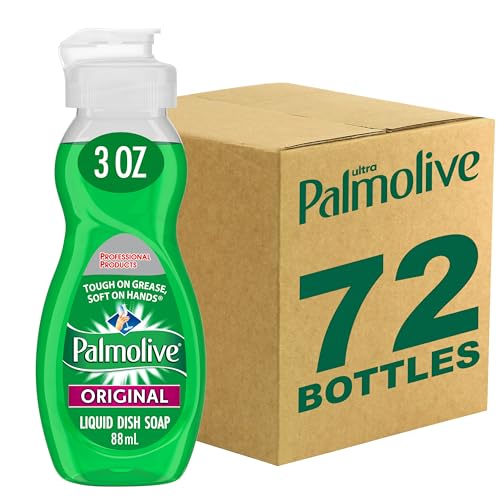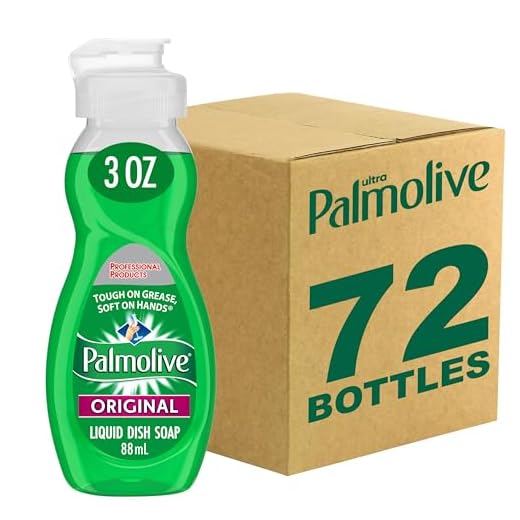



Cast iron skillets are beloved for their durability and ability to retain heat, but they can be a bit tricky to clean. If you’ve ever cooked with one, you know that sometimes food can stick to the surface and leave a stubborn, sticky residue behind. But fear not, with a few simple steps, you can easily restore your cast iron skillet to its pristine condition.
Step 1: Scrubbing
The first step in cleaning a sticky cast iron skillet is to scrub off any food residue. Start by filling your sink with hot water and adding a few drops of mild dish soap. Using a soft sponge or scrub brush, gently scrub the surface of the skillet, paying special attention to any sticky spots. Avoid using abrasive materials, such as steel wool, as they can strip away the skillet’s seasoning.
Pro tip: For especially stubborn residue, you can create a paste by mixing equal parts baking soda and water. Apply this paste to the sticky areas and let it sit for a few minutes before scrubbing.
Step 2: Rinsing
After scrubbing, thoroughly rinse the skillet with hot water to remove any soap residue. Be sure to rinse both the inside and outside of the skillet. Avoid using harsh chemicals or soaking the skillet for extended periods, as this can damage the seasoning and cause rust.
Pro tip: To ensure all soap residue is removed, you can add a small amount of white vinegar to your rinse water.
Step 3: Drying
Once the skillet is rinsed, it’s important to dry it thoroughly to prevent rust. Place the skillet on a stovetop burner set to low heat and allow it to heat up for a few minutes. This will help evaporate any remaining moisture. Then, using a clean, dry cloth or paper towel, wipe away any excess water.
Pro tip: To further protect your skillet from rust, you can apply a thin layer of vegetable oil or melted shortening to the surface while it’s still warm.
By following these steps, you can easily clean a sticky cast iron skillet and maintain its seasoning for years to come. Remember to always take care when cleaning your skillet to avoid damaging the surface or the seasoning. Happy cooking!
Preparation and Supplies
Before you begin cleaning your sticky cast iron skillet, it’s important to gather all the necessary supplies. Here is a list of items you will need:
1. Dish soap: Choose a mild dish soap that doesn’t contain any harsh chemicals that could damage the seasoning of your skillet.
2. Sponge or brush: Use a non-abrasive sponge or brush to clean the skillet. Avoid using steel wool or abrasive scrubbers that can scratch the surface.
3. Hot water: Use hot water to help loosen the sticky residue and make it easier to clean.
4. Plastic scraper: A plastic scraper can be useful for removing stubborn, stuck-on food particles.
5. Paper towels or cloth: Have some paper towels or a clean cloth ready for drying the skillet.
6. Cooking oil: After cleaning and drying the skillet, you’ll need to season it again. Make sure you have some cooking oil available for this step.
7. Stove or oven: You’ll need a heat source to heat the skillet after cleaning for seasoning. A stove or oven will work.
8. Oven mitts: To protect your hands from the hot skillet, it’s important to have oven mitts or pot holders on hand.
Note: It’s important to read and follow the manufacturer’s instructions for cleaning your specific cast iron skillet, as some may have different recommendations or restrictions.
Removing the Sticky Residue
When dealing with a sticky cast iron skillet, it is important to remove the residue before continuing with the cleaning process. Here are some effective methods to remove the sticky residue:
1. Scrubbing with Salt: Start by sprinkling a generous amount of coarse salt on the surface of the skillet. Use a kitchen towel or a scrub brush to scrub the salt into the sticky areas. The abrasive texture of the salt will help to lift the sticky residue.
2. Vinegar Soak: Fill the skillet with a mixture of equal parts of water and white vinegar. Let it soak for about 1 hour. The acidity of the vinegar will work to break down the sticky residue, making it easier to remove.
3. Baking Soda Paste: Make a paste by mixing baking soda with water. Apply the paste to the sticky areas and let it sit for about 10-15 minutes. Use a sponge or a scrub brush to gently scrub the residue away.
4. Boiling Water: Fill the skillet with water and bring it to a boil on the stovetop. Allow it to boil for a few minutes, then use a wooden spoon or spatula to scrape off any loose, sticky residue. Be careful not to burn yourself in the process.
5. Soap and Warm Water: If the above methods don’t fully remove the sticky residue, try washing the skillet with hot soapy water. Use a mild dish soap and a sponge to gently scrub the surface. Rinse thoroughly and dry immediately to prevent any new stickiness from forming.
Remember to season your cast iron skillet after removing the sticky residue to restore its non-stick properties and prevent it from rusting. With regular cleaning and proper care, your cast iron skillet will last for generations to come.
Scrubbing and Seasoning
Once you have removed any stuck-on food from your cast iron skillet, it’s time to scrub and season it. Scrubbing helps to remove any remaining residue and helps to restore the non-stick surface of your skillet. Seasoning, on the other hand, helps to create a protective layer on the surface of the skillet and prevents rusting.
To scrub your cast iron skillet, you can use a scrub brush or a non-abrasive scrubbing pad. Avoid using harsh chemicals or metal scrubbers, as they can damage the seasoning. Instead, use warm water and a small amount of dish soap to gently scrub the surface of your skillet. Rinse thoroughly with warm water and pat dry with a clean towel.
Once your skillet is clean, it’s time to season it. Seasoning involves applying a thin layer of oil to the surface of the skillet and heating it to create a polymerized oil layer. This layer not only prevents rusting but also adds to the non-stick properties of the skillet.
To season your skillet, start by applying a small amount of oil or fat to the surface. You can use vegetable oil, shortening, or even bacon grease. Spread the oil evenly using a paper towel or a clean cloth. Make sure to cover all the surfaces, including the handle and the bottom of the skillet.
Next, place your skillet upside down on the middle rack of your oven, with a baking sheet or aluminum foil on the bottom rack to catch any drips. Bake at 350°F (175°C) for 1 hour. This will allow the oil to penetrate and polymerize, creating a protective layer.
After 1 hour, turn off the oven and let the skillet cool completely inside the oven. Once it’s cool, your cast iron skillet is ready to use. It’s now properly seasoned and ready to handle any cooking task.
Drying and Storing
After cleaning your sticky cast iron skillet, it is important to thoroughly dry it to prevent it from rusting. Start by using a clean, dry cloth or paper towel to remove any remaining moisture. Ensure that all water has been removed from the skillet, including from the handle and any crevices.
Once the skillet is dry, place it on the stovetop over low heat to evaporate any remaining moisture. This will help to ensure that the skillet is completely dry and ready for storage.
After the skillet has been dried, use a small amount of cooking oil to season it and protect it from rusting. Apply a thin layer of oil to the entire surface of the skillet, including the handle. Use a paper towel to spread the oil evenly.
Store your cast iron skillet in a cool, dry place with the lid off to allow for proper air circulation. Avoid stacking other cookware on top of the skillet, as this can cause damage. If you prefer, you can also store the skillet inside a cloth or paper towel to further protect it.
By properly drying and storing your cast iron skillet, you can prolong its lifespan and continue to enjoy cooking with it for years to come.
Tips for Preventing Stickiness
- Ensure the skillet is properly seasoned before use. Seasoning creates a natural non-stick surface on the skillet.
- Use an appropriate amount of oil or fat when cooking. Adding too much oil can cause stickiness.
- Preheat the skillet before adding any food. This can help prevent ingredients from sticking to the surface.
- Avoid cooking highly acidic foods, such as tomatoes or lemon juice, in your cast iron skillet as they can contribute to stickiness.
- Avoid using metal utensils that can scrape the seasoned surface of the skillet. Opt for wooden or silicone utensils instead.
- Clean the skillet immediately after use. Leaving food residue in the skillet can lead to stickiness.
- Avoid using harsh cleaning products or scrubbing too vigorously, as this can damage the seasoning and lead to stickiness.
- Properly dry the skillet after cleaning to prevent moisture from causing stickiness.
- Store the skillet in a dry place with good airflow to prevent moisture buildup and potential stickiness.
By following these tips, you can keep your cast iron skillet in great condition and prevent stickiness.
FAQ
What is a cast iron skillet?
A cast iron skillet is a type of cookware made from cast iron, which is known for its durability and heat retention properties. It is commonly used for frying, baking, and searing food.
Why is my cast iron skillet sticky?
There are a few reasons why your cast iron skillet may be sticky. It could be due to improper seasoning, the use of too much oil during cooking, or not cleaning it properly after each use.
How can I clean a sticky cast iron skillet?
To clean a sticky cast iron skillet, you can start by scrubbing it with a stiff brush and hot water. If that doesn’t remove the stickiness, you can try boiling water in the skillet to loosen any stuck-on food. Then, scrub it again and dry it thoroughly before applying a thin layer of oil to season it.
Can I use soap to clean my cast iron skillet?
While it is generally recommended to avoid using soap on your cast iron skillet, as it can remove the seasoning, you can use a small amount of mild dish soap if needed. Just make sure to rinse it thoroughly and dry it completely to prevent any rusting.











